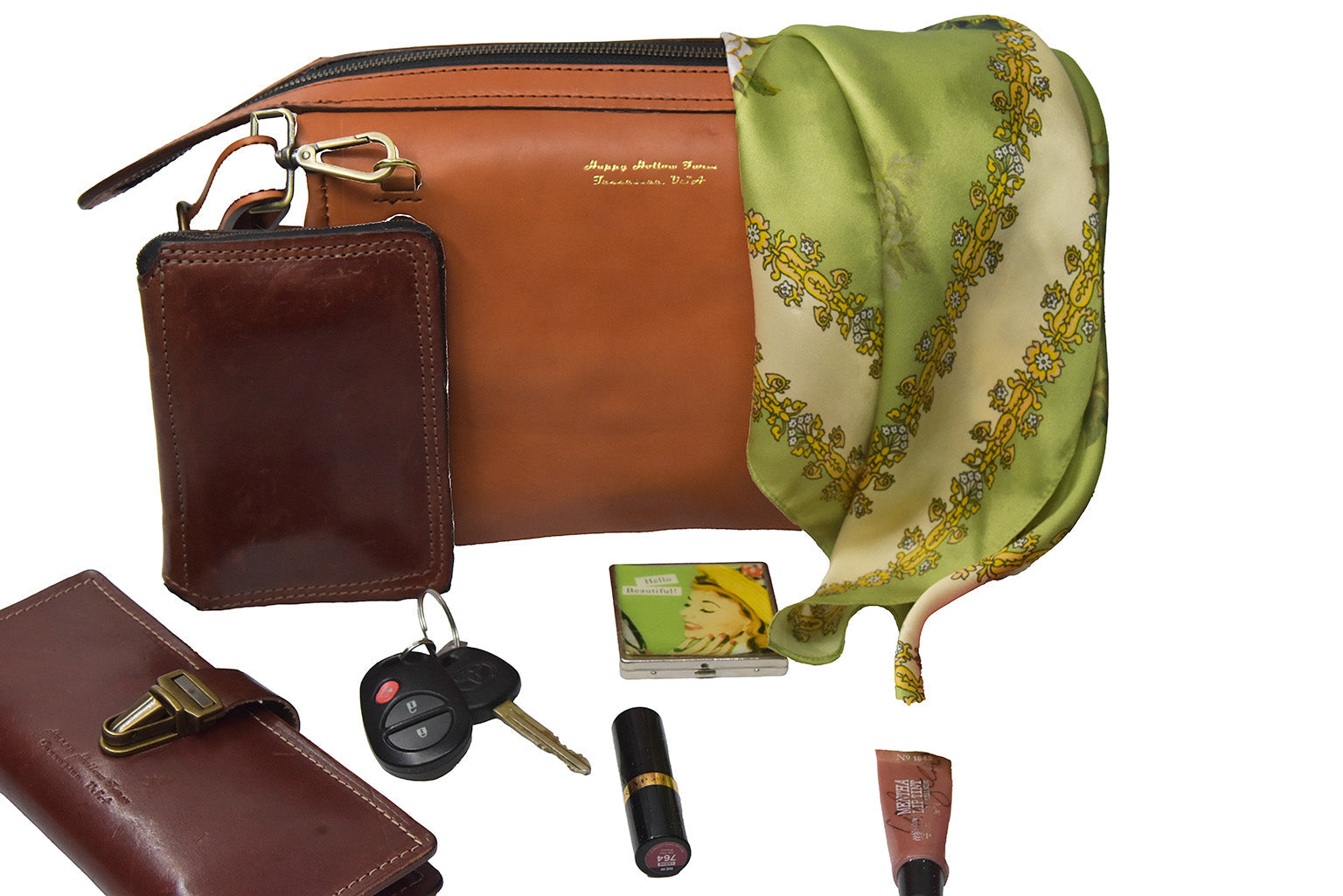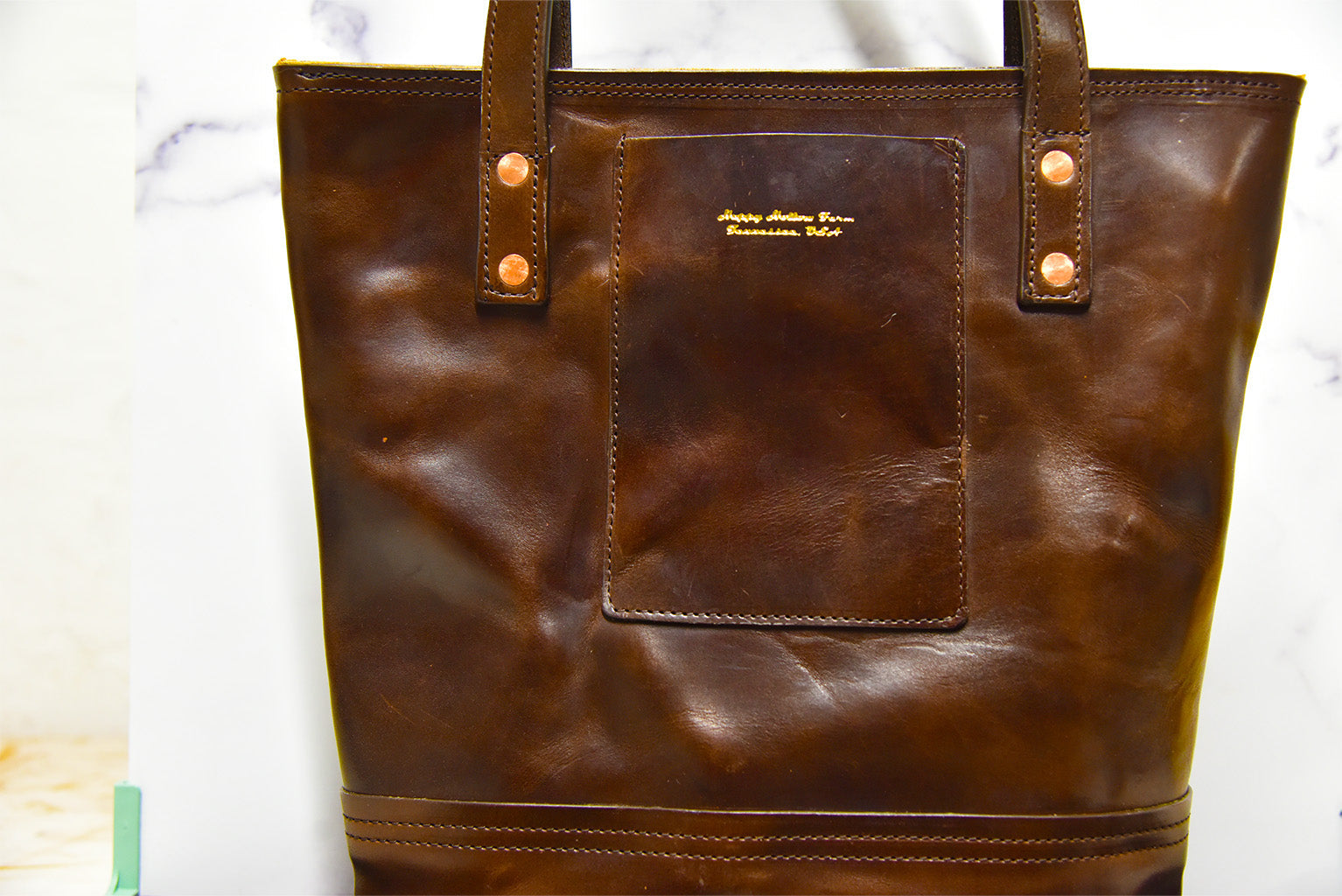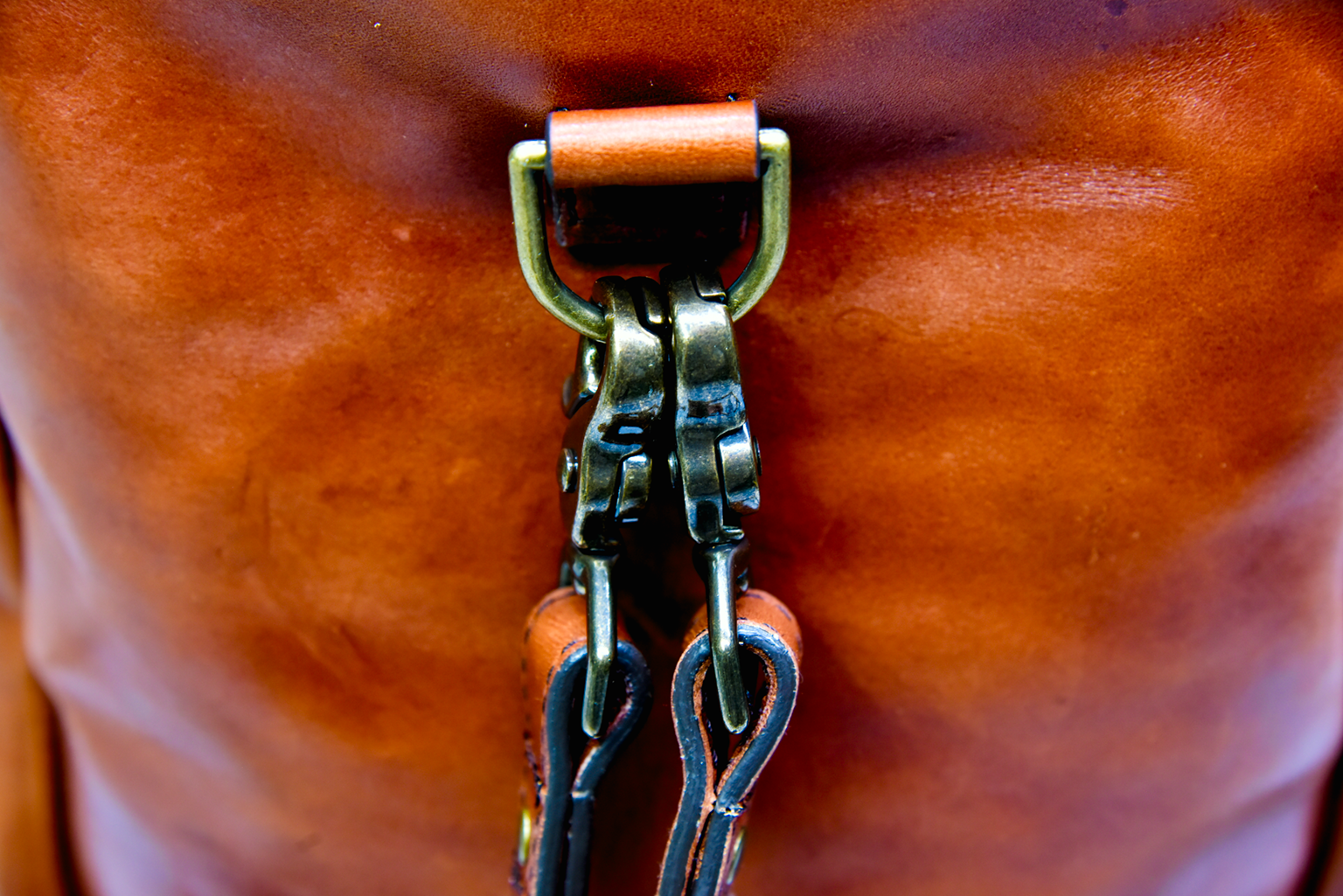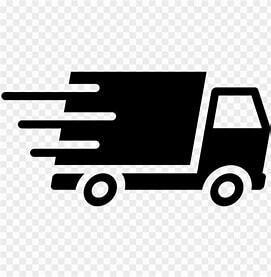
How to Purchase High-Quality Leather Products: A Comprehensive Guide
If you value craftsmanship, durability, and timeless style, high-quality leather products can be a worthwhile investment. But how do you know if that leather bag or other product you’re eyeing is made to last—or just made to look good in pictures? Below is a practical guide to help you choose and care for premium leather goods, using examples and insights from our own work at Happy Hollow Farm, where we’ve been crafting leather products in Tennessee since 2019.
1. Understand Different Types of Leather
Not all leather is created equal. The quality depends on many factors, including the source of the hide and the tanning process.
- Full-Grain Leather
- What Is It? This is the topmost layer of the hide that retains all the grain.
- Key Benefits: Durable, ages beautifully (develops a rich patina), and retains the natural markings that give each piece a unique character.
- Our Take: We primarily use full-grain leather at Happy Hollow Farm for products like bags, portfolios and wallets because of its enduring strength and timeless appearance.
- Top-Grain Leather
- What Is It? The second-highest grade of leather, sanded or buffed to remove imperfections.
- Key Benefits: Smooth, uniform look. Slightly thinner and more pliable than full-grain.
- Our Take: If you prefer a sleeker aesthetic with fewer visible scars or markings, top-grain can be a great choice.
- Genuine Leather or Corrected-Grain Leather
- What Is It? Lower-grade leather that undergoes extensive processing.
- Key Drawbacks: Often less durable and won’t age as nicely.
- Our Take: These options can still be decent if you’re on a strict budget, but they generally won’t match the longevity and character of full- or top-grain leather.
- Other “types” of Leather
- Faux leather is actually not leather. This is typically made from industrial products like PVC.
2. Assess Craftsmanship and Construction
No matter how fine the leather is, the overall quality of your product depends heavily on construction techniques and attention to detail.
- Stitching Quality
- What to Look For: Even, tight stitches with no loose threads. Hand-stitching can be a sign of artisanal work, but machine-stitching done by skilled craftspeople is also reliable.
- At Happy Hollow Farm: We use robust stitching methods, ensuring your leather product can handle daily wear and tear without fraying.
- Edges and Finishing
- What to Look For: Smooth, sealed edges that resist fraying. The edging should lie flat without roughness.
- At Happy Hollow Farm: We take time to bevel, sand, heat, paint and burnish edges so they’re comfortable to hold and resistant to moisture.
- Hardware and Accessories
- What to Look For: Solid metal components—like buckles, zippers, rivets—that won’t easily bend or break.
- At Happy Hollow Farm: We select solid brass, where we can find it or other hardware made from stronger metal for bags, wallets, portfolios and other items, balancing both function and form.
- Zippers: We primarily use three zippers; Solid brass (internal pockets), Excella (YKK Japan) or Riri Switzerland.
3. Evaluate the Tanning Process
Leather tanning methods affect durability, texture, and environmental impact.
- Vegetable Tanning
- Overview: Uses natural tannins from tree bark and other organic materials.
- Benefits: Produces a distinct natural look, often with earthy tones and a leather smell. Leather is typically stiffer initially but develops a softer hand over time.
- Drawbacks: Longer production time, higher cost.
- Our Tip: If you love authentic, richly hued leather that “breaks in” beautifully, vegetable-tanned products are a great choice.
- Chrome Tanning
- Overview: Uses chromium salts; faster and more commonly used in mass production.
- Benefits: Produces softer, more uniform leather in various colors, often at a lower price point.
- Drawbacks: May not develop as strong a patina as vegetable-tanned leather.
- Our Tip: Check if the tanner follows eco-friendly processes, as traditional chrome tanning can be harsh on the environment.
- Cautions:
- Some tanneries use add on materials like fish oils or other substances to create the look and or feel of true vegetable tanning. These methods typically use chromium salts at the start.
- Some tanneries add other materials to the tanning process to speed up the process, this often affects long term durability and appearance.
4. Inspect for Real vs. Faux Leather
Counterfeit or synthetic leathers might look convincing at first glance. Here’s how to spot genuine leather:
- The Feel Test
- Real Leather: Feels warm, slightly textured, and may have natural creases.
- Faux Leather: Often has a uniform, plasticky feel.
- The Scent Test
- Real Leather: Has a distinct, earthy aroma (the “leather smell”).
- Faux Leather: Often smells like plastic or chemicals.
- The “Pinch” or Bend Test
- Real Leather: Wrinkles or changes color slightly when bent.
- Faux Leather: Remains uniform, may crack or show an unnatural crease.
5. Consider Ethical and Sustainable Practices
Many consumers now prioritize environmental responsibility and fair labor practices when buying leather.
- Traceability
- Seek information on where the hides are sourced. Ethically sourced hides are often by-products of the food industry, reducing waste.
- At Happy Hollow Farm, we’re proud to partner with reputable tanneries that adhere to sustainable and humane practices.
- We can identify where every item we use in the production of our products is from, where it is made, what it contains and who makes it.
- Handmade vs. Mass-Produced
- Handcrafted items typically have a lower carbon footprint, plus each piece is made with care and attention to detail.
- Supporting small businesses helps local communities thrive and preserves artisanal traditions.
6. Budget for Quality
High-quality leather items can cost more upfront, but they often outlast cheaper alternatives by years—or even decades. Investing in a well-made bag or other leather product can ultimately save you money and reduce waste.
- Cost-Benefit Analysis
- A $50 genuine leather belt that cracks within a year is actually more expensive in the long run than a $100 full-grain belt that lasts for 10 years.
- Many of our loyal customers at Happy Hollow Farm share stories of their purchases that still look great after years of hard use.
- Look for Sales or Bundles
- Some brands and artisans (like us) occasionally offer bundles, discounts, or seasonal promotions.
- Signing up for a newsletter or following social media pages can help you snag a deal without compromising on quality.
7. Proper Care and Maintenance
Even the best-quality leather needs a little TLC.
- Cleaning
- Wipe away dirt or debris with a soft, microfiber cloth. For deeper cleaning, use a mild leather cleaner. We recommend Fiebing's saddle soap for gentle cleaning
- Avoid harsh chemicals or soaking. Water and detergents can strip oils from the leather.
- Conditioning
- Periodically apply a specialized leather conditioner to keep the hide supple and prevent cracking.
- Focus on high-stress areas like seams and creases.
- We recommend and offer Smith’s Leather Balm. It is organic and contains only three natural ingredients.
- Storage
- Store your leather goods in a cool, dry place away from direct sunlight, which can fade and dry out leather.
- If you’re storing a bag or wallet long-term, stuff it with acid-free paper to help retain its shape.
- Also for long term storage place the item in a cloth or stain bag for protection.
8. Where to Find High-Quality Leather Goods
Buying from a trusted artisan or established brand ensures consistency and reliability. At Happy Hollow Farm in Tennessee, we’ve been crafting premium, small-batch leather products since 2019. Our product line includes:
- Leather Bags: Ranging from classic everyday styles to special occasion pieces, all made with sturdy full-grain vegetable tanned leather and high-quality hardware.
- Wallets and Cardholders: Minimalist designs with robust stitching for everyday use.
- Accessories: Durable, comfortable, and handcrafted with your usage in mind.
- Portfolios: Available in two sizes to accommodate medium to large notebooks and tablets.
Each item showcases our commitment to top-tier materials, skilled construction methods, and personalized customer support. Our excellent customer reviews speak to the care and attention we put into every piece we create.
Closing Thoughts
Choosing the right leather product involves knowing your grades of leather, examining craftsmanship, and budgeting for durability. When you invest in high-quality leather, you’re not just buying a product—you’re inheriting a piece that can journey with you for years to come.
We suggest comparison shopping. A process that will take some time but will increase your likely positive outcome. As the old saying goes “all that glitters is not gold”.
If you’re ready to take the plunge into authentic, handmade leather goods, consider browsing our collection at Happy Hollow Farm. We’re proud to carry on the tradition of craftsmanship, rooted in Tennessee’s rich heritage, and we look forward to providing you with a piece you can cherish for a lifetime.
Got Questions?
Drop us a line via our contact page or connect with us on social media. Our friendly team is always ready to help you find (or create) the perfect leather piece!






